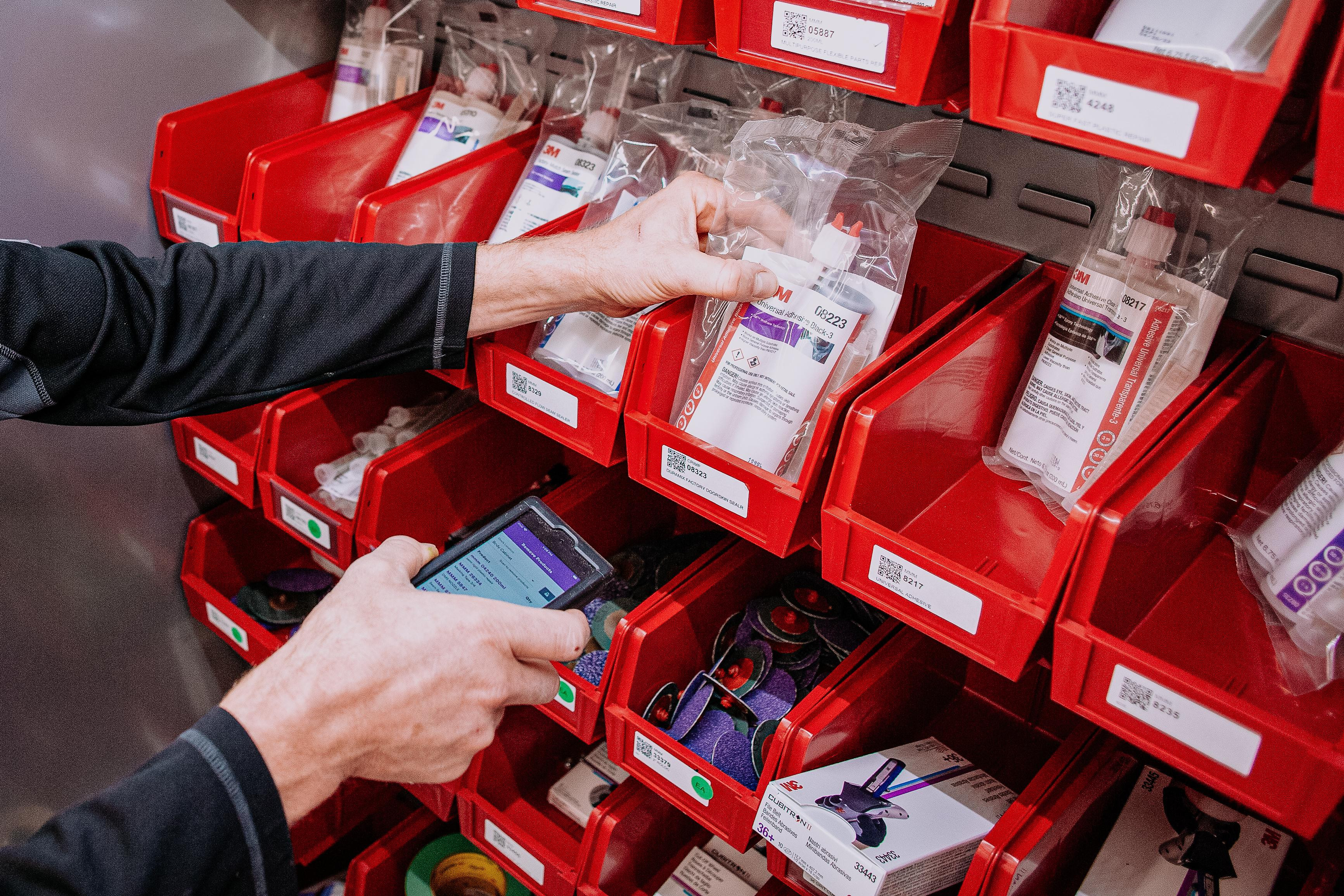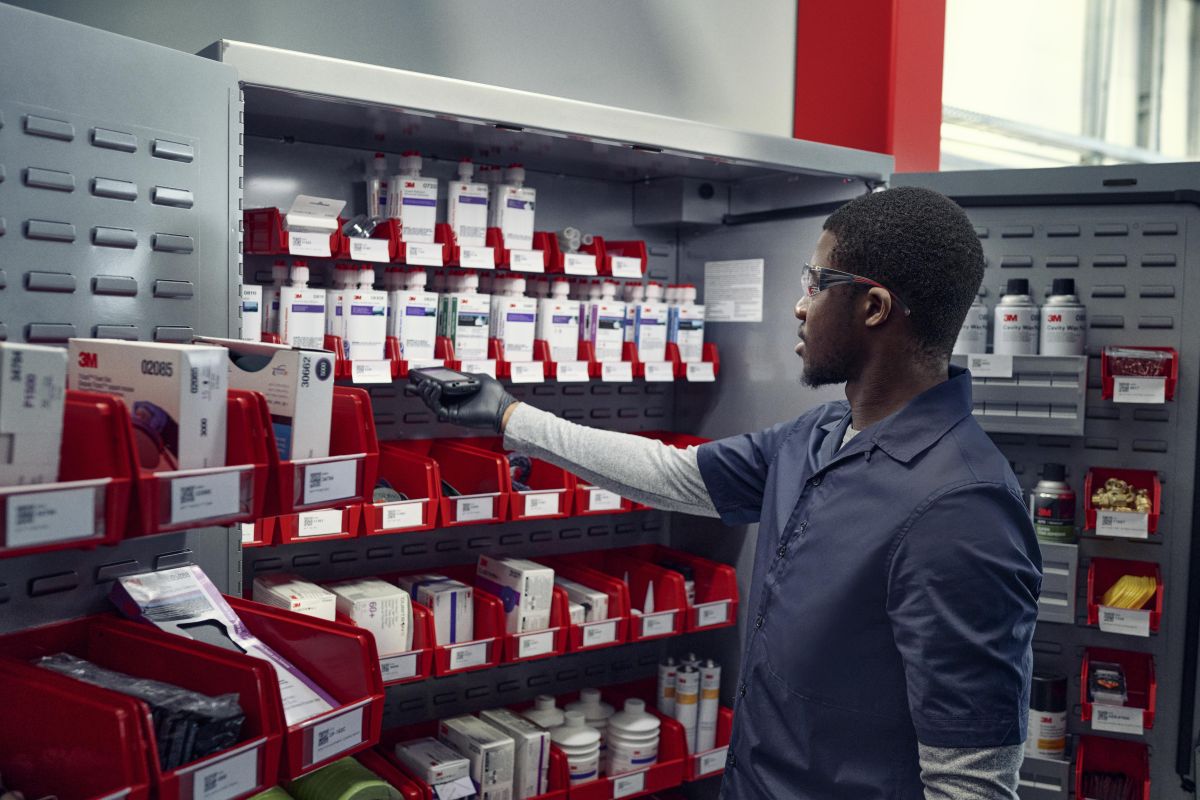With the changes in vehicles today, John Ascheman, Senior Application Engineer at 3M, said that repair planning is critical to fix cars correctly according to OEM procedures.
“Many shops are used to doing repair planning for the structural portion of the repairs but have overlooked other elements, such as paint,” said Ascheman. “To keep the vehicle rolling through production, it’s important to identify all materials that need to be used and how Advanced Driver-Assistance Systems (ADAS) are impacted.”
Knowing what is needed up front, Ascheman said will save an enormous amount of time throughout the process and enhance overall customer service.
“Nobody wants to call a customer and tell them, ‘Sorry, we don't have the right adhesives to put your car together, or we used the wrong paint,” he pointed out. “By having the right materials when you need them and providing that information to customers, they will know that their vehicle is being fixed correctly.”
Another advantage to repair planning is the ability to provide information to the insurance company up front to start the billing process and potentially minimize supplements.
When talking to repairers, Ascheman stresses the importance of focusing on the positive side of repair planning.
“Often, people like to see how much they can fight to get every little item added to a bill,” he said.

Instead, Ascheman encourages repairers to determine what processes should be used to fix the car, according to OEM procedures.
“The number one priority is getting the vehicle back to that original crash worthiness using all the right products,” Ascheman emphasized.
3M has taken a leadership role in supporting the industry in repair planning by introducing 3M™ RepairStack™ Performance Solutions at the SEMA Show in Las Vegas, NV, in 2022.
The combined hardware and software inventory management platform was designed to help optimize and automate day-to-day body shop processes. The system includes a contract for 3M Allied products, a lockable stationary cabinet, an Apple® iPod® Touch scanner, the 3M™ Performance Analysis Tool and 3M™ Billables Invoicing.
“RepairStack helps shops maximize profitability, performance and efficiency,” said Ascheman.
The automated solution offers inventory management, blueprinting and billing, and real-time business performance analysis.
Utilizing the inventory management system, shops can track and organize 3M and non-3M materials, automate reordering from distributors and improve efficiency. RepairStack’s integrated software helps capture accurate inventory usage by repair order, technician and vehicle. It also assists with blueprinting and billing for material costs. Shops can keep track of business performance with the real-time performance analysis tool, which monitors key performance indicators (KPIs).

Ascheman said that customers are finding that the customizable options available with 3M™ RepairStack™ has helped automate day-to-day processes and track materials more efficiently, leading to better performance.
“The performance analytics section helps keep track of products that you're purchasing from your distributor and you can then benchmark overall purchases,” he explained. “From there, you can focus in on that data and try to improve your shop’s overall performance of how much clear you're buying or how much basecoat or sandpaper.”
As a result, he said it helps shops manage overall shop and technician performance.
“It can help reduce overall inventory because you can set what you need when you need it,” Ascheman added. “When you reach a certain quantity, it automatically reorders according to the schedule you set to keep things moving smoothly and efficiently, so you don't have products going bad or a large amount of inventory on hand.”
It also provides the exact amounts of products used so shops can bill accurately and provide documentation.
“We’re seeing an average shop is billing around $3,000 in materials each month,” said Ascheman.
By incorporating RepairStack into their facilities, he said they are turning what used to be a cost center into a profit center.
“In addition, shops can better track repairs to help get reimbursed by billpayers,” said Ascheman.
3M sales representatives visit shops throughout the U.S. and Canada to answer questions regarding RepairStack and assist with general repair planning.
To further the industry’s repair planning skills, the company also offers courses at the 3M™ Skills Development Center in Minnesota focused on body and paint repair.
Technicians have an opportunity to do minor dent repairs and learn how to identify everything that needs to be done as part of the repair plan. They are also taught how to set up SOPs and material management.
In addition, 3M offers online training through its Collision Repair Academy. Ascheman said the company plans to create new training courses based on industry needs.
Due to the ever-changing landscape of the collision repair industry, Ascheman said that repair planning has become more important than ever before.
“It is not just a hot button topic that will go away, and it is important for collision repair centers to do this successfully and accurately for all vehicles they repair,” he said. “The industry has been working hard to help support these needs from collision repair centers, and many companies are working to provide the data that is necessary to repair vehicles properly. I encourage everyone to use that information on every vehicle they repair.”




